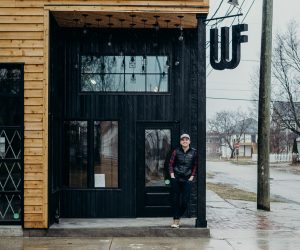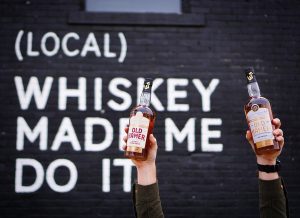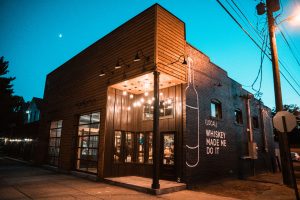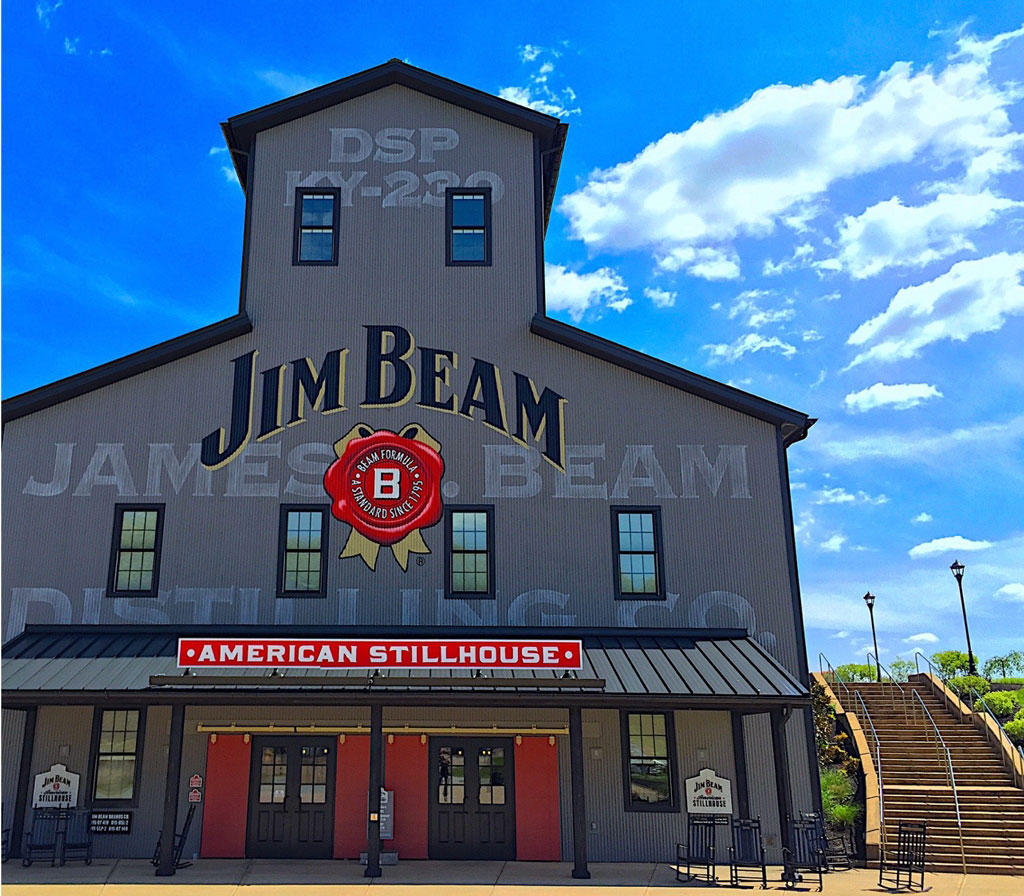Q&A With West Fork Distillery’s Blake Jones
By Richard Thomas
 When non-Hoosiers think of Indiana whiskey, they usually think of a sourced brand based on the work of that survivor of the Seagram empire, the distillery in Lawrenceburg now known as MGP. However, Indiana is home to a craft distilling scene of its own, and in terms of its scope and vibrancy that scene is every bit as much in the middle of America as the state itself.
When non-Hoosiers think of Indiana whiskey, they usually think of a sourced brand based on the work of that survivor of the Seagram empire, the distillery in Lawrenceburg now known as MGP. However, Indiana is home to a craft distilling scene of its own, and in terms of its scope and vibrancy that scene is every bit as much in the middle of America as the state itself.
So, I was glad to be able to ask co-founder Blake Jones about his whiskey-making outfit in Indianapolis, West Fork Distillery.
RT: From what I understand, West Fork has a classic start-up story: y’all cashed out your pensions, took out loans and maxed out your credit cards to get started. Now what surprises most people about craft distilleries is how often none of the people starting them have a background in chemistry or engineering. So, what were you doing before you started West Fork?
BJ: All three co-founders have different backgrounds and contribute differently. Specifics regarding each of our backgrounds are as follows: [Myself]: finance background with years of professional experience in banking. Undergraduate degree in finance and an MBA in finance; David McIntyre – professional experience in consulting and banking. Undergraduate in business and a JD (law degree); Julian Jones – background in medicine and science. Undergraduate degree in biochemistry, masters in biology, and three years of medical school, dropped out to chase the whiskey dream!
RT: You are best known for reviving the defunct Old Hamer brand, an Indiana brand that dates back to the early 19th Century. On top of that, you bill your mission as creating “boldly Indiana whiskey.” So, just what is the identity of classical Old Hamer and Indiana whiskey, and how is what you are doing now reflecting that?
BJ: The classical identity of Old Hamer branded whiskey was that it was some of the finest whiskey around in the 19th century. As the story mentions, the Hamer family took excess grain in the form of payment instead of cash or bank notes. So, they decided to turn that excess grain, which was primarily corn, into whiskey; selling it in port towns down the Mississippi all the way to New Orleans.
To us this whiskey, in addition to our grain to glass West Fork brands, incorporate what we view as boldy Indiana whiskey. To us boldy Indiana whiskey is two-fold: first a brand that isn’t bashful about being from Indiana and second, very high corn mash bills relative to what exists on the market.
 RT: In addition to Old Hamer, you have several other whiskey brands. Incidentally, I’m especially fond of the cheeky name of Rye-Ter’s Block. Which of those half dozen other whiskeys are especially popular with your consumers?
RT: In addition to Old Hamer, you have several other whiskey brands. Incidentally, I’m especially fond of the cheeky name of Rye-Ter’s Block. Which of those half dozen other whiskeys are especially popular with your consumers?
BJ: In distribution, both of our bourbons are equally popular as we have a wheated variety dubbed The Colonel and a high-rye variety dubbed B-St. Blues. In our tasting room, both Rye-Ter’s Block, our rye whiskey which is about 60% rye and 40% corn along with our 100% corn whiskey aged in used bourbon barrels (dubbed All or Nothing), are some of the most popular.
RT: You launched a line of canned cocktails, Mint Condition, in August! How did the start go?
BJ: Mint Condition wasn’t our first foray into the canned cocktail line. In early 2020, we released some of the only (as well as most affordable) straight bourbon canned cocktails on the market, which we called Cold Hamers. The Cold Hamer line uses our award winning line of 99% corn bourbon as the base. All of our canned cocktail lines including our Mint Condition whiskey smash have been very successful.
RT: Another thing you did in August was announce plans to build a new, larger facility in Westfield. So what would that expansion mean for West Fork?
BJ: The agritourism expansion in Westfield is key to our long term strategy of creating the highest quality, corn forward whiskey on the market. It is essential for building our brands in the long-term as it gives us the ability to expand both our retail and outward facing facets of our business which allow consumers to get a hands-on West Fork experience beyond our downtown Indianapolis tasting room.
 RT: Craft distillers have been hard hit lately. Many were already taking it on the chin from the trade war tariffs, and then came the pandemic. How have you been coping in Indianapolis?
RT: Craft distillers have been hard hit lately. Many were already taking it on the chin from the trade war tariffs, and then came the pandemic. How have you been coping in Indianapolis?
BJ: Knock on wood, this year has been very positive for us in terms of growth. Our strategy has always been to create an approachable craft experience, which incorporates approachable prices. For example, our 80 proof Old Hamer bourbon can be found at retailers between $19.99 and $24.99. This strategy, coupled with the launch of our Cold Hamer line and our quarantine elixir line has led to double digit growth in 2020.




